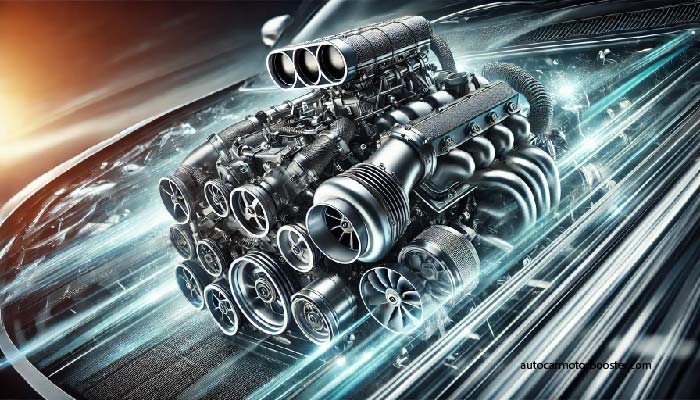The thrill of driving is largely determined by how quickly your vehicle responds when you press down on the throttle. Throttle response is crucial in delivering that thrilling instant power. Many drivers, especially car enthusiasts, are always in pursuit of better acceleration and quicker response time. Luckily, boosting techniques can significantly enhance this aspect, making driving more responsive and exhilarating.
In this article, we’ll explore effective ways to enhance throttle response by implementing various boosting techniques. From tuning tips to mechanical adjustments, we will delve into all possible methods to ensure an optimized throttle response for your car. Whether you are a performance enthusiast or simply want a more enjoyable drive, these methods will help you get the best results.
Understanding Throttle Response
Throttle response, sometimes referred to as engine responsiveness, refers to how quickly the engine reacts to the driver pressing the accelerator pedal. A delay or lag is commonly known as throttle lag, which can lead to sluggish driving experiences. Enhancing this response provides a more immediate surge of power, giving you better control and making the drive feel more connected.
Several factors can affect throttle response, including air intake efficiency, exhaust flow, tuning, and engine management systems. Luckily, you can apply boosting techniques to address most of these factors.
Boosting Techniques to Improve Throttle Response
1. Upgrading Air Intake System
One of the most effective techniques to enhance throttle response is upgrading the air intake system. The engine needs the right amount of air to function optimally, and restrictions in the air intake can cause delayed throttle reactions. Installing a high-flow air filter or a cold air intake system helps to deliver cooler and more oxygen-dense air, which improves combustion and boosts throttle response.
2. Throttle Controller Installation
A throttle controller is an electronic device that modifies the signal sent from the accelerator pedal to the engine. It eliminates the delay that often exists in modern drive-by-wire systems. By increasing the sensitivity of the pedal, a throttle controller provides a quicker and sharper response, which directly impacts how fast your car reacts when you press the pedal.
3. ECU Tuning
Another powerful way to improve throttle response is by ECU tuning. Tuning the engine control unit (ECU) allows for optimizing the fuel-air ratio, ignition timing, and other parameters that contribute to the vehicle’s responsiveness. With a custom tune, you can adjust the throttle mapping to make the throttle more aggressive and quick to respond.
4. Reducing Weight and Friction
Reducing unnecessary weight in the car can also positively affect throttle response. Removing excess weight makes it easier for the engine to accelerate the vehicle, resulting in faster response times. Additionally, reducing mechanical friction by using lightweight components or lubricants helps improve the overall throttle response.
5. Boosting Turbocharged Cars
If your car has a turbocharger, there are specific boosting techniques to improve throttle response. Installing a blow-off valve or adjusting the wastegate can help reduce turbo lag, making power delivery smoother and more immediate. Additionally, a turbo boost controller can also help increase the boost pressure, thereby enhancing the throttle response when accelerating.
Key Considerations When Enhancing Throttle Response
Improving throttle response often involves working with different aspects of your car’s engine and its electronic control systems. However, there are a few key points you need to consider before making any modifications:
- Engine Health: Make sure your engine is in good health. A poorly maintained engine might not respond well to boosting modifications.
- Aftermarket Parts: Be mindful of compatibility when installing aftermarket parts like cold air intakes, throttle controllers, or boost controllers. Always ensure they are suitable for your car’s model.
- Professional Help: Some modifications, especially ECU tuning, require professional expertise to ensure your car’s performance and reliability are not compromised.
The Benefits of Boosting Throttle Response
- Enhanced Acceleration: A quick throttle response means better acceleration, especially when pulling out from a stop or overtaking on the highway.
- Improved Driving Experience: Faster and more precise response to driver input translates into a more enjoyable and engaging driving experience.
- Better Control: Enhanced throttle response provides better control over the car, which is particularly important in performance driving or on winding roads.
Conclusion
Throttle response is an important part of the driving experience, and enhancing it can significantly improve the car’s overall performance. With a combination of boosting techniques like upgrading the air intake system, installing a throttle controller, ECU tuning, reducing weight, and making specific turbo adjustments, you can make your vehicle feel much more responsive and agile.
Whether you’re looking to enjoy your daily commute a little more or take your car to the next level of performance, these techniques will provide noticeable improvements.
FAQs on Enhancing Throttle Response
1. What is throttle response? Throttle response refers to how quickly an engine reacts to the driver pressing the accelerator pedal. Faster throttle response provides a more immediate power surge, which is desirable for better performance.
2. How can I improve throttle response without significant modifications? Simple changes such as installing a throttle controller, upgrading the air intake system, or reducing weight can improve throttle response without major modifications.
3. Does ECU tuning help with throttle response? Yes, ECU tuning helps optimize various engine parameters, including the throttle map, fuel-air ratio, and ignition timing, leading to improved throttle response.
4. Are there any risks involved in enhancing throttle response? Enhancing throttle response can be safe if done properly. However, improper tuning or installing incompatible aftermarket parts may lead to engine strain or reliability issues.
5. Can a turbocharged car have good throttle response? Yes, by using techniques like adjusting the wastegate, installing a blow-off valve, or using a boost controller, you can significantly improve the throttle response in turbocharged vehicles.
If Like This Article Visit Our Website. Collect From Wekiapedia
